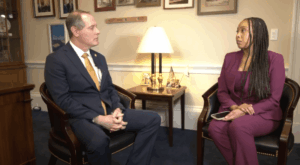
President Donald Trump has ordered the demolition of the entire East Wing of the White House, a decision that has ignited significant controversy across the United States. The East Wing, a historical structure built in the 1790s by enslaved workers, will be replaced by a new ballroom that Trump claims will accommodate up to 1,000 guests. This move raises profound questions about the preservation of national heritage and the future of the executive mansion, often referred to as “The People’s House.”
The proposed ballroom, measuring approximately 90,000 square feet, is designed to be more than one-and-a-half times the size of a football field. Critics have described the architectural rendering as “Kremlin-esque,” reflecting Trump’s penchant for opulence. In a statement made in July 2023, Trump asserted, “It won’t interfere with the current building… It’s my favorite place. I love it.” Yet, this assertion stands in stark contrast to his previous comments, where he reportedly referred to the White House as “a real dump.”
Concerns Over Historical Integrity
The demolition of the East Wing has drawn sharp criticism from preservationists and historians. The National Trust for Historic Preservation expressed deep concern over the project, stating that the proposed addition could overshadow the White House itself, which spans 55,000 square feet. The organization emphasized that such alterations could permanently disrupt the building’s classical design, a reflection of the nation’s history and values.
In addition to the East Wing’s demolition, the Trump administration has made various changes to the historic grounds, including modifications to the Rose Garden originally designed by First Lady Jacqueline Kennedy. Trump has also announced plans for a grand arch on the National Mall, inspired by France’s Arc de Triomphe, in celebration of the nation’s 250th anniversary in 2026. When questioned about the arch’s purpose, Trump candidly responded, “Me,” leading to its informal designation as the “Arc de Trump.”
Funding and Political Implications
The cost of the new ballroom has ballooned from an initial estimate of $200 million to over $300 million. Critics argue that this funding, which is reportedly backed by numerous corporations including Apple, Google, and Amazon, raises ethical questions about the influence of corporate interests in government decisions. The funding is expected to require substantial resources from taxpayer-funded agencies, such as the Secret Service, raising concerns amidst a government shutdown that has left thousands of federal workers furloughed.
In response to the growing backlash against the East Wing’s demolition, the White House issued a statement defending Trump’s “visionary addition,” labeling critics as “unhinged leftists” who are out of touch with the administration’s goals. The statement highlights Trump’s approach to governance, characterized by a transactional style that some argue undermines democratic processes.
The political climate has intensified, particularly after widespread protests dubbed “No Kings Day” took place across the country. Over 7 million people participated in these demonstrations, voicing their opposition to what they perceive as Trump’s authoritarian tendencies. The protests spanned from states with strong Republican support to traditionally Democratic areas, uniting a diverse coalition against perceived overreach by the Trump administration.
As the demolition of the East Wing proceeds, the implications for the future of the White House and the integrity of American democracy remain to be seen. The ongoing changes reflect a profound shift in how the executive branch interacts with its historical legacy and the role of the public in safeguarding national heritage.






